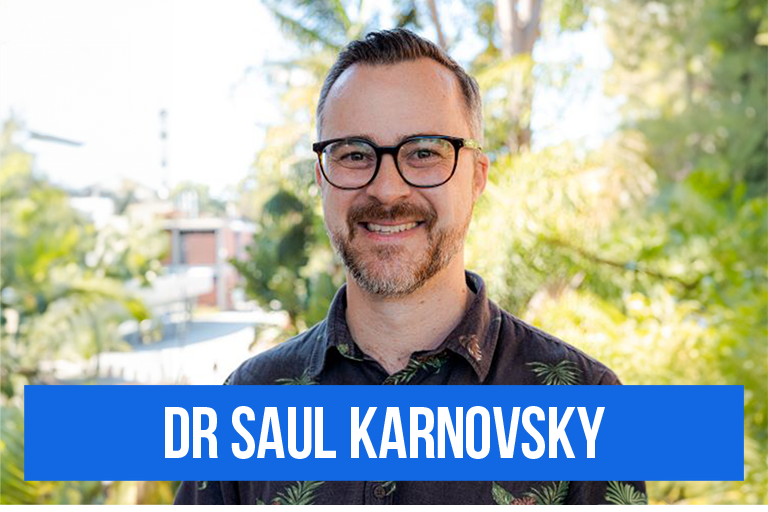When the $10 million Be That Teacher campaign launched last week, there was hope the federal, state, and territory governments’ collaboration would help solve the critical teacher shortage.
The campaign was created by the high-profile Clemenger BBDO advertising agency. It will run across billboards, cinemas, social media, television, and at bus stops and train stations until April 2024.
One component of the initiatives the campaign promotes – part of the National Teacher Workforce Action Plan – will allocate 1000 Commonwealth Teaching Scholarships annually. Prospective teachers who must undertake their Initial Teacher Training can apply for grants of up to $40,000 between 2024 and 2028.
But some education sector experts say the campaign does not go far enough. They believe a broader, multifaceted approach is overdue.
At Monash University’s Faculty of Education, researcher Nashid Nagir specialises in exploring teachers’ professional identity, particularly in those from migrant backgrounds and those who speak English as an additional language.

She commends the Be That Teacher campaign “for highlighting teaching as the ‘greatest profession’ and the importance of spirited recruitment efforts to attract high-achieving individuals” but believes other strategies could make a difference.
Equitable approach for immigrant teachers
“We need to make substantial investments in ensuring access of immigrant teachers into the profession – reducing teacher workload, improving their status, fostering societal respect, and implementing national recruitment and retention strategies. While this campaign is enthusiastic, achieving sustainability requires a comprehensive approach that tackles these crucial issues,” she says.
“One cost-effective and equitable government approach involves fully recognising immigrant teachers, removing discriminatory English language requirements, acknowledging overseas qualifications and experiences, and valuing them as transculturally enriched plurilingual hybrid professionals. Immigrant teachers’ journey in English language teaching underscores the power of passion and personal values developed over time, emphasising the need to support their emotional connection with teaching for a brighter future in education.”
Campaign is not a quick fix
At University of Technology Sydney (UTS), Dr Jane Hunter is an expert in curriculum, digital learning and pre-service and in-service teacher education. She believes creating positive stories about teacher and school experiences through the Be That Teacher campaign, and offering financial relief through the Commonwealth Teaching Scholarships, are all “significant and responsive steps that will support addressing the teacher shortage challenge”.

“But they are not quick fixes,” she says.
“The case study videos demonstrate the importance of the work teachers do in a manner that reminds the public of why teachers matter – why having great schools are vital for democracy. The scholarships will incentivise school leavers to choose teaching as a career with a stipend to support elevated living and financing course costs. Sustained focus on these two approaches could be followed up by teacher education schools in universities as scholarship holders complete their courses and provide more case study profiles for the recruitment campaign on social media.”
To retain teachers successfully – and sustainably – Dr Hunter says “proper renumeration and an improved career structure with reduced administrative workloads for classroom teachers and school leaders” is essential.
Public school funding is essential
Providing more funding to public schools to employ more para-professionals to conduct data collection is also important, she says.
“More detail on solutions targeting renumeration and career structures are canvassed in the new Talking Teachers podcast series hosted Dr Don Carter and myself,” Dr Hunter told EducationDaily. As is “a bi-partisan approach by governments to commit to education that prioritises the equitable funding of schools”.
“My research in K-12 schools over two decades now has focused on building teacher capacity through action research-focused professional learning,” she says. “This work is underpinned by a philosophy of retaining teachers at all levels in the profession.”
Read more: A love for learning – but no teachers
In her latest book, High Possibility STEM Classrooms, Dr Hunter says the research has successfully supported the creation of sustained and engaged classrooms in disadvantaged school communities.
To create a greater impact, she believes the Be That Teacher campaign needs to focus on the professional work of teachers and match that with funding for schools to buy time to engage with university partners.
“Sadly, in public schools where resources are often limited, their state departments are increasingly not valuing teachers’ professionalism and are making less and less time available to do this kind of ongoing learning,” Dr Hunter says.
Reasons why teachers are leaving must be addressed
Dr Saul Karnovsky at Curtin University’s School of Education in Perth shares similar sentiments. He believes that meaningful solutions to the teacher shortage can only be found by addressing the problems current teachers face.
“If we do not address the root causes of why teachers are leaving, even newcomers will not stay long in the job,” he says.
Dr Karnovsky is an experienced pre-service teacher educator and early career researcher, specialising in the fields of teacher emotions, pedagogy, professional practice and classroom management.

He points to findings from the State School Teachers’ Union of WA (SSTUWA) report that recommends reducing teaching workloads to attract new employees and retain current experienced staff.
“Teachers reported that their administrative work had increased by 92 per cent between 2018-2020, which meant they spent less time on important teaching tasks,” he told EducationDaily. “This work is cumbersome, time-consuming and often unnecessary.”
Like Dr Hunter, Dr Karnovsky believes that employing more para-professionals to provide admin support in schools is critical.
“Much like the front office staff who provide a vital service in schools, additional staff could be hired to take on the work of data input, compliance reporting, risk management documentation and so on. The state government should also ensure they examine all this administration and ensure what they are asking of schools is actually required to deliver quality learning outcomes. They must trust teacher professional judgement and work towards streamlining these tasks.”
Support for students with behavioural needs
To enhance classroom management practices around student behaviour, Dr Karnovsky again highlights the SSTUWA report. It shows how teachers feel about the lack of adequate resources to develop and implement personalised plans for students with behavioural needs.
“We need to see this issue in relation to the system level reforms, workload and funding problems school current face,” Dr Karnovsky told EducationDaily. “Under the Independent Schools Program initiative in WA, many schools have lost critical family liaison officers and student support staff.”
It’s a situation that is especially acute in regional and remote schools.
“If teachers do not have adequate time to dedicate to teaching tasks because of unnecessary admin, they won’t have the resources it takes to carefully manage and follow up on difficult behaviours.”
School leadership lays the foundation
He says funding for students with special needs around behavioural issues is “woefully inadequate”.
“For teachers to feel positive, safe and happy in their roles, they simply can’t be expected to manage daily challenging behaviour problems on their own. They need support from their school leadership and the wider state education ecosystem,” he says.
Dr Karnovsky quotes from page 31 of the report to support his view:
“At a time when many are calling for greater attention to be paid to student mental health and well-being, the loss of dedicated, professional staff to help address student well-being was one of the main reasons given to the Panel for the reported rise in discipline problems. While it is understood that students’ learning is influenced by many out-of-school factors largely beyond schools’ influence, teachers and school leaders accept that they have a responsibility to support student learning regardless of students’ circumstances or background. However, to do this well, schools need help: well-funded programs which identify and address students’ additional needs and timely access to appropriate services and resources which prevent problems developing and help remove barriers to students reaching their potential.”








